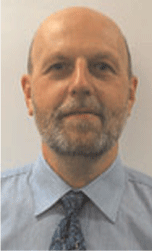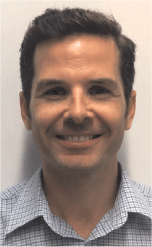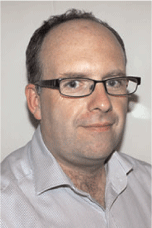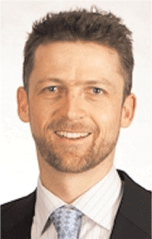CSG water: the challenge of upstream interfaces—well to beneficial use
Steven Page A , Lyvonne Ly A , Ryan Edge A , Scott Campbell A and Dominic Dowling AWorleyParsons.
The APPEA Journal 54(2) 514-514 https://doi.org/10.1071/AJ13087
Published: 2014
Abstract
In its journey from well to beneficial use, CSG-produced water passes through multiple systems and processes. Understanding and managing these inter- and intra-system interfaces is vital to a successful outcome for capital and operating costs, water quality, brine management and overall asset integrity. This extended abstract discusses a number of case studies and outcomes as described below.
Optimising the gathering system—wells and trunk lines
Whole lifecycle-downhole pressure operating costs (OPEX) versus gathering line size capital costs (CAPEX)
Pipe size standardisation: trunk line OPEX versus trunk line size/cost; pressure versus materials
Reliability and availability—node-to-node system analysis, influence and conjunctive use
Optimum network architecture and water treatment facility (WTF) location
WTFs and water storages—protecting the core
What’s in the water—water blending, pipeline corrosion management and well/drilling products
Reliability and maintenance: bigger WTF and water storages versus spares strategy and reliability management
Manage inter plant streams—recovery costs less that waste management
Treated water end use and brine management—a product people want
Know your end user—getting it right early is a win for everyone
Guidelines, regulation and best practice—a potentially volatile mix?
Optimising the number and location of WTFs based on end use—value versus risk
Brine—commodity versus waste management; an understanding of the product, market and risks is vital

Steve Page is sector manager for the WorleyParsons Water Engineering Group in Queensland. Steve has 30 years’ experience in the water and wastewater industries in Australia, and globally encompassing strategic planning, project and program management, process design management, planning studies, water treatment plant troubleshooting, project engineering and operations management. Steve was the WorleyParsons Alliance Leadership Team (ALT) representative for the Gibson Island Alliance—a 100 ML/d advanced water treatment plant. Gibson Island was a key part of the Western Corridor Recycled Water Project (WCRWP). The ALT had various duties, including setting policy, giving philosophical and strategic direction, issuing various directions and approvals and making key commercial decisions. Steve was involved, in particular, in addressing EPA issues and design team resourcing. Steve has worked on CSG produced water RO desalination and brine management projects for major CSG Producers in eastern Australia. He is currently engaged as the QA/Q Engineering Manager for a confidential global CSG producer of the FEED and EPCM delivery of a water treatment facility and brine management system in the Surat Basin, involving a 100 MLD nominal capacity RO desalination plant and associated RO pre-treatment (incorporating disc screening filtration for fine solids removal, UF, ion exchange for hardness removal and polishing cartridge filtration). |

Lyvonne is a process engineer with over 10 years of professional experience in the field of water and wastewater design and engineering with specialized knowledge and expertise in microfiltration/ultrafiltration (MF/UF), pretreatment and reverse osmosis (RO) membrane technology. Lyvonne’s experience covers a broad range of projects both locally and internationally, which include concept select studies, feasibility analysis, pilot plant studies, design (concept, functional and detailed) and commissioning of water and wastewater plants. In her present role as a Senior Process Engineer, she is responsible for providing engineering services for project delivery in private and public sectors including Domestic/Municipal Wastewater, Urban Development/Recycled Water, Mining, Power and Gas industries. Lyvonne has recently worked on a major CSG project in Queensland, Australia, including the pre-FEED assessment of water gathering network configurations, CSG water desalination, brine management and brine/salt disposal options, including water and brine collaboration studies. |

Ryan is a senior process engineer with MWH with over fourteen years’ experience in water and wastewater engineering covering design management, process design, and the operation and commissioning of water and wastewater treatment processes. He is a chartered engineer with the Institute of Engineers Australia and a Registered Professional Engineer of Queensland. Ryan has worked with a range of clients including Origin Energy, Gold Coast City Council, Brisbane Water, Queensland Gas Company and Arrow Energy, across the full project lifecycle from concept select to detailed design, construction support and commissioning. His recent roles include Study Lead for the Arrow Energy Bowen Gas Project Upstream Concept Select Study and Lead Process Engineering roles on the Coombabah & Stapylton Programme Alliance (CaSPA) Stapylton WWTP and the Brisbane Water Enviro Alliance (BWEA) Wynnum Water Reclamation Plant. He has undertaken Senior Process Engineering roles for the Australia Pacific Liquefied Natural Gas (APLNG) Project FEED, the Queensland Gas Company (QGC) Liquefied Natural Gas Projectand a commissioning role at the Gibson Island Advanced Water Treatment Plant. Ryan is presently taking a lead role in MWH’s construction and completions support team for APLNG’s Condabri Central and Reedy Creek WTFs. |

Scott is a Practice Manager within the WorleyParsons Consulting team. He has over 15 years of experience in a wide portfolio of water projects which has included strategic planning; network infrastructure and pump station design for both water supply and wastewater; treatment plant upgrades; service reservoir design and refurbishment; and asset planning. His recent project experience has included rationalisation and optimisation of water assets for CSG produced water, has project managed a number studies in development of water treatment facilities. Scott was the Design Manager for the 100MLd MF/RO Gibson Island Advanced Water Treatment Plant, providing pioneering recycled water indirect potable reuse solution to South East Queensland during the millennium drought where he was responsible for overseeing the final stages of the design works during construction, commissioning and close-out. His experience includes extensive involvement in the planning studies and investigations into the potential feasibility of future water source options for the Sunshine Coast which have included new surface water storages, desalination, groundwater abstraction and recycled water. Scott’s experience in this area is complimented by planning works for the Queensland Water Commission. These studies have included concept designs for a pipeline linking regional WTPs to the Water Grid; a pre-feasibility scoping study into a potential Mary River Harvesting Scheme and the concept through to detailed scoping of the Water grids’ Northern Interconnector Supply Main. His experience in water transport and networks is founded on his previous employment with Thames Water where as part of the reservoirs group, was significantly involved in the design, construction and operation of service and storage reservoirs and associated supply and distribution pipelines. |

Dr Dominic Dowling is the Practice Manager for the Environmental Management and Sustainability team in WorleyParsons’ Northern Operations (covering Queensland, Northern Territory and PNG). In this role, he is responsible for strategic planning, business development, team management, and oversight of the technical and commercial aspects of projects. The 25-person team are involved in a wide range of projects in the resources, energy and infrastructure sectors. Dom’s technical focus is on risk management and business sustainability, where he works with customers to identify, evaluate and implement opportunities to reduce non-technical risk, and improve business performance and sustainability. Dom is fully versed in the intent and application of AS/NZS ISO 31000 (Risk Management), and is a skilled workshop facilitator. Dom has robust technical skills combined with solid experience in practical action aimed at generating sustainable change. He has a proven track record of effective leadership, project planning and management, and demonstrated proficiency in innovation, capacity building and stakeholder engagement. |
References
Ly, L., Page, S., and Fergus, I., 2013—Desalination and the Challenge for the CSG Industry – Develop a Holistic CSG Brine Management Solution. APPEA 2013.Brannock, M., Stuart, B., Kane, R., Wauchope, A., and Broome, I., 2011, Brine Management of Coal Seam Gas Water: Pure Salt Recovery & Other Methods. OzWater 2011.
Dehp, 2012—Coal Seam Gas Water Management Policy. Brisbane: Department of Environment and Heritage Protection Government.
Csiro, 2012—Coal seam gas - produced water and site management. Accessed January 2014. <http://www.google.com.au/url?sa=t&rct=j&q=&esrc=s&source=web&cd=1&cad=rja&uact=8&ved=0CCoQFjAA&url=http%3A%2F%2Fwww.csiro.au%2Fnews%2F~%2Fmedia%2F28458902B7DD460AA6BDDAEF02B28145.ashx&ei=XhYyU-mJN4LyiAexs4Ao&usg=AFQjCNE45eHvxdpeoHOZRzT8yTSWwG_jYA&sig2=Keb5kjJxmBEo73RKp8PSOA&bvm=bv.63587204,d.aGc>.
Santos, 2013—Coal Seam Gas Water. Accessed January 2014. <www.santos.com/coal-seam-gas/coal-seam-gas-water.aspx>.
Qgc, 2013—QGC reaches water treatment milestone. Accessed January 2014. <www.qgc.com.au/news-media/NewsDetails? Id=4825>.
APLNG, 2014—Sustainable Water Practices. Accessed January 2 <www.aplng.com.au/home/sustainable-water-practices>.


